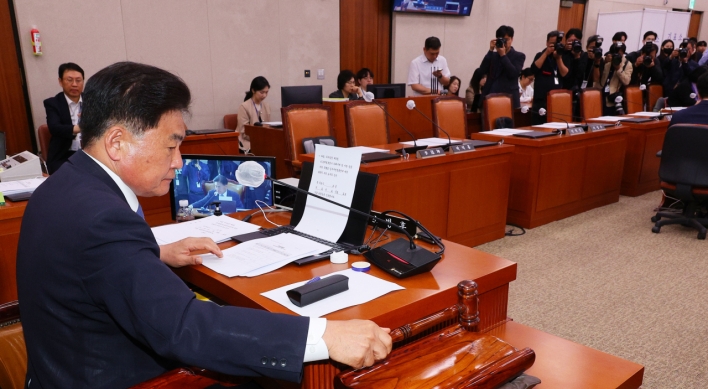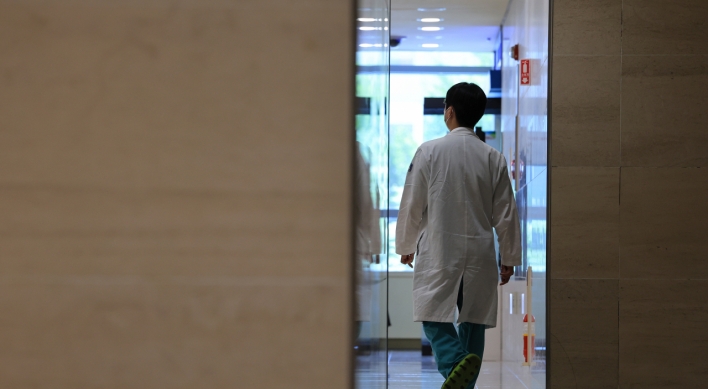[Daniel DePetris] China is pushing Japan into building up military
By Korea HeraldPublished : Dec. 19, 2022 - 05:39

Japan isn’t known for being an aggressive country in the world of foreign affairs. Successive Japanese governments have taken pains to emphasize their peacelike nature, a direct consequence of Tokyo finding itself on the losing side of the most horrific war of the 20th century. Japan’s constitution renounces the use of force as a “means of settling international disputes,” and at $54 billion as of last year, its defense budget is extremely modest compared with its $4.9 trillion economy.
Japanese Prime Minister Fumio Kishida, however, no longer believes Tokyo’s traditional defense policy and military outlays are sufficient. The security dynamics in East Asia today are much different and arguably more threatening to Japan than they were in the decades after World War II, even when one accounts for the fact that Tokyo has a US security guarantee and about 55,000 US troops are stationed in Japanese territory. Kishida wants Japan’s defense budget to double over the next five years, a massive investment for a country with the highest ratio of debt to gross domestic product in the developed world.
Even so, the international security environment in Japan’s neighborhood is pushing policymakers and lawmakers to support what would ordinarily be off the table. Japanese officials normally reluctant to weigh in on some of the region’s most controversial security disputes are now doing so far more liberally. Koichi Hagiuda, chairman of the ruling Liberal Democratic Party’s Policy Research Council, not only criticized China for its increasing belligerence over Taiwan, but did so during a trip to the self-governed island. While one has to be cautious in extrapolating too much from a single event, Hagiuda’s comments at least suggest that some in Tokyo’s policy elite are no longer content with sitting back and quietly registering their disapproval. Warning China of destabilizing what has been a relatively calm and orderly balance of power between Asia’s great powers is now deemed more important than keeping friction at a minimum.
It’s understandable why Japan believes a change in approach is needed. Today’s China is not the China of the 1970s or even the China of the 1990s, when it was still considered a middle power with a subpar military capability and a significant poverty problem. Notwithstanding the slower economic growth and socioeconomic problems associated with the coronavirus, the China of 2022 is on its way toward becoming Asia’s preeminent military and economic power.
At the turn of this century, Beijing’s defense budget clocked in at slightly more than $22 billion; in 2020, that figure reached $252 billion, an 11-fold increase. The People’s Liberation Army, or PLA, as the Chinese military is formally named, has invested a significant sum of that money toward building its navy, bolstering its missile capacity (China has the world’s largest stockpile of intermediate-range ballistic missiles) and researching the next generation of weapons technology.
The Chinese Communist Party under Xi Jinping also isn’t afraid to demonstrate some of those capabilities when the situation demands it. The world saw this most recently in August, when House Speaker Nancy Pelosi overrode Biden administration concerns and proceeded with a visit to Taiwan. After Pelosi’s trip, the PLA launched a multiday military exercise, simulating a blockade of Taiwan, sending dozens of aircraft across the de facto boundary separating China and Taiwan’s airspace, and firing missiles into the sky — one of which landed in Japan’s exclusive economic zone.
Nobody is arguing the PLA is preparing for an invasion of Japanese territory, of course. But to the Japanese government, the exercises over the summer were confirmation that Tokyo needed to improve its own defense capacity and diversify its security partnerships with states that share the same concerns about Chinese power. One of those states is Australia, which just unveiled a 7.4 percent year-over-year boost to its own defense budget. Tokyo and Canberra are in discussions to collaborate more deeply in the military realm, including engaging in more bilateral military drills and possibly flying combat aircraft to one another’s territory.
Unilaterally, Japan is also targeting its defense investments and broadening the concept of what it means to act in self-defense. Washington and Tokyo have been in talks since the spring on a deal that would provide Japan with hundreds of US-made Tomahawk cruise missiles, which have a range of more than 1,600 kilometers and would be a stopgap as the Japanese work to accelerate enhancing the distance of their own land-based missile systems. Acquiring a so-called counterstrike capability would have been quite controversial only a few years ago since these missile systems would be able to hit targets in China and North Korea. But the shift in Japanese public opinion toward developing an offensive military capability is striking: A May poll conducted by two Japanese news outlets found more than 64 percent of respondents supported holding enemy bases at risk with long-range standoff weapons in order to strengthen deterrence.
US policymakers talk a lot about burden sharing, or the notion that US allies need to pad their defense budgets and transform themselves into legitimate security contributors rather than security dependents. Yet burden shifting, or US allies taking primary responsibility for their own security, is just as important.
Time will tell if Japan’s sudden burst of activity on the defense front will be sustained over the long term. What we can say with confidence is that China’s campaign to become the superior power in Asia is forcing others, even a pacifist Japan, to take defense more seriously than it has in the past.
Expect this type of balancing behavior to continue in the future.
Daniel DePetris
Daniel DePetris is a fellow at Defense Priorities and a foreign affairs columnist for the Chicago Tribune. -- Ed.
(Tribune Content Agency)
-
Articles by Korea Herald











![[Kim Seong-kon] Democracy and the future of South Korea](http://res.heraldm.com/phpwas/restmb_idxmake.php?idx=644&simg=/content/image/2024/04/16/20240416050802_0.jpg&u=)






![[KH Explains] Hyundai's full hybrid edge to pay off in slow EV transition](http://res.heraldm.com/phpwas/restmb_idxmake.php?idx=652&simg=/content/image/2024/04/18/20240418050645_0.jpg&u=20240418155304)

![[Today’s K-pop] Zico drops snippet of collaboration with Jennie](http://res.heraldm.com/phpwas/restmb_idxmake.php?idx=642&simg=/content/image/2024/04/18/20240418050702_0.jpg&u=)